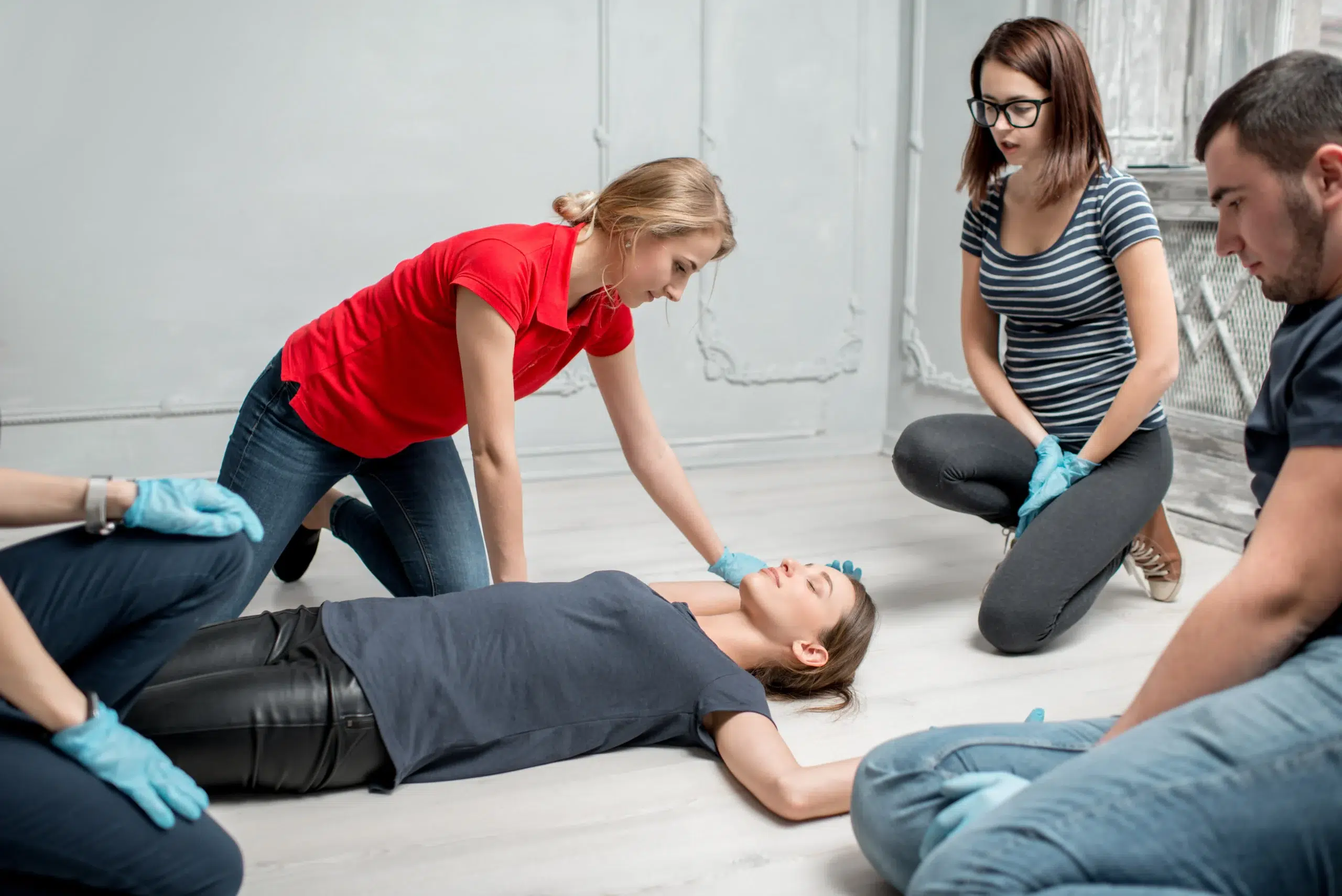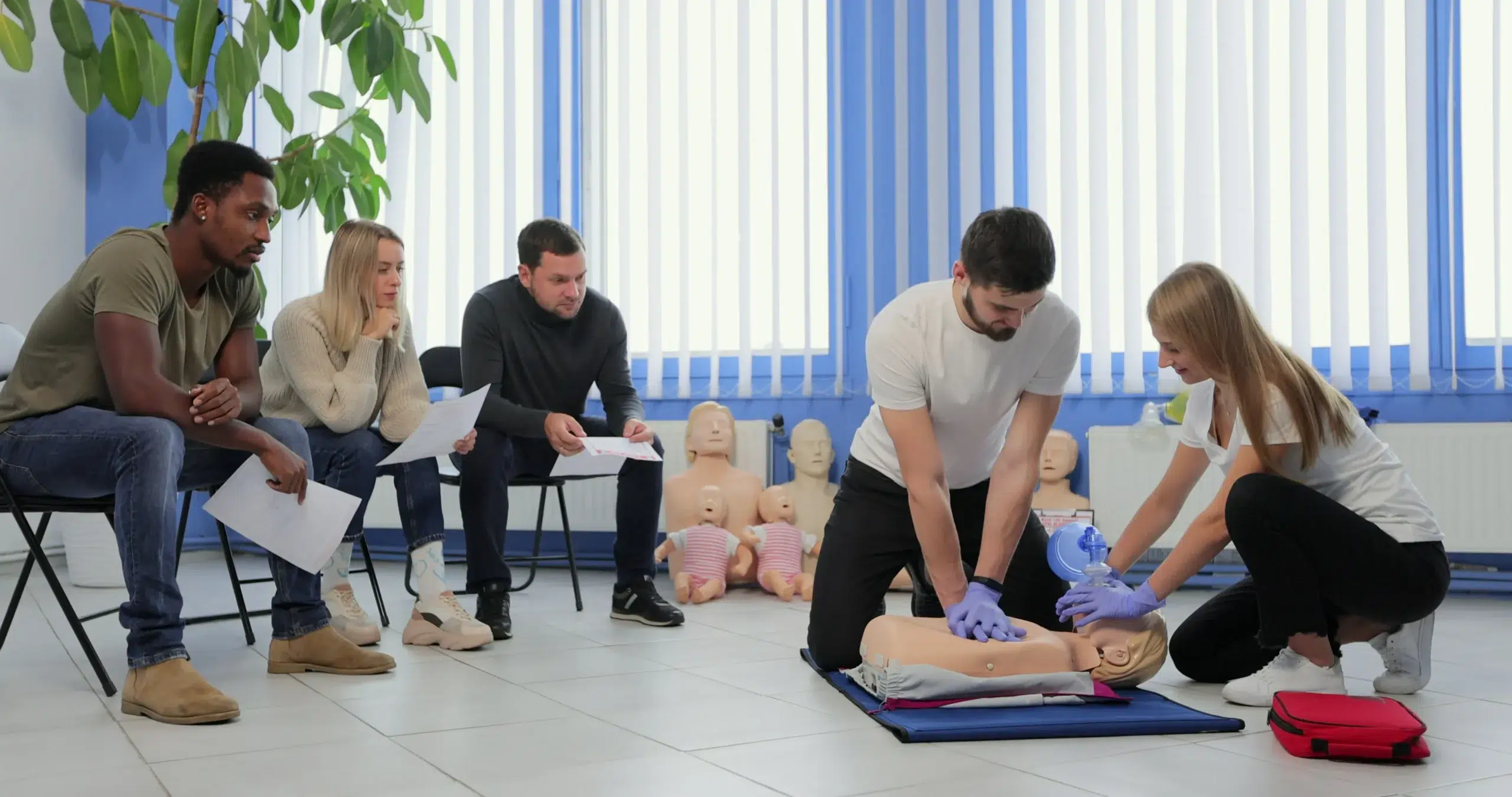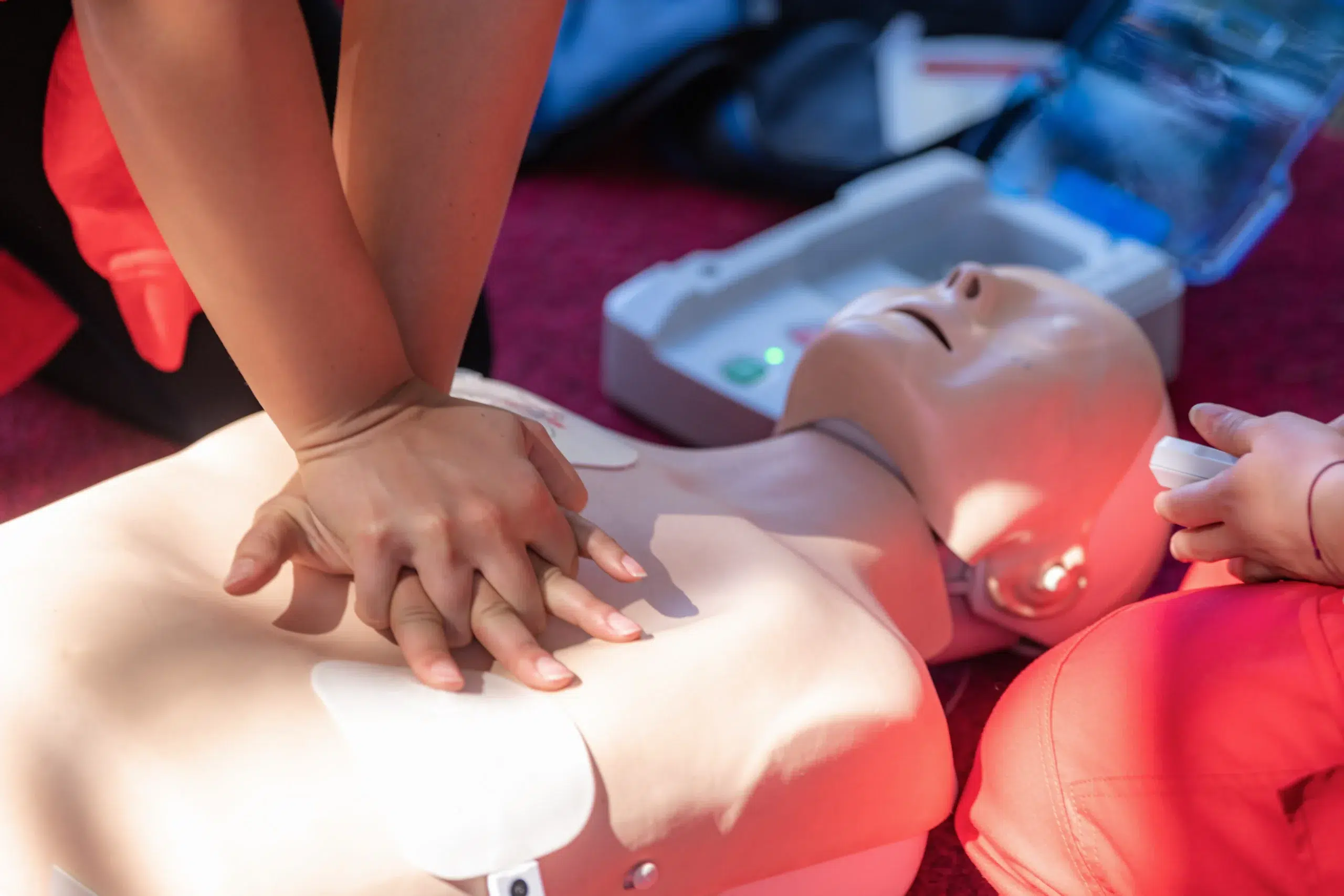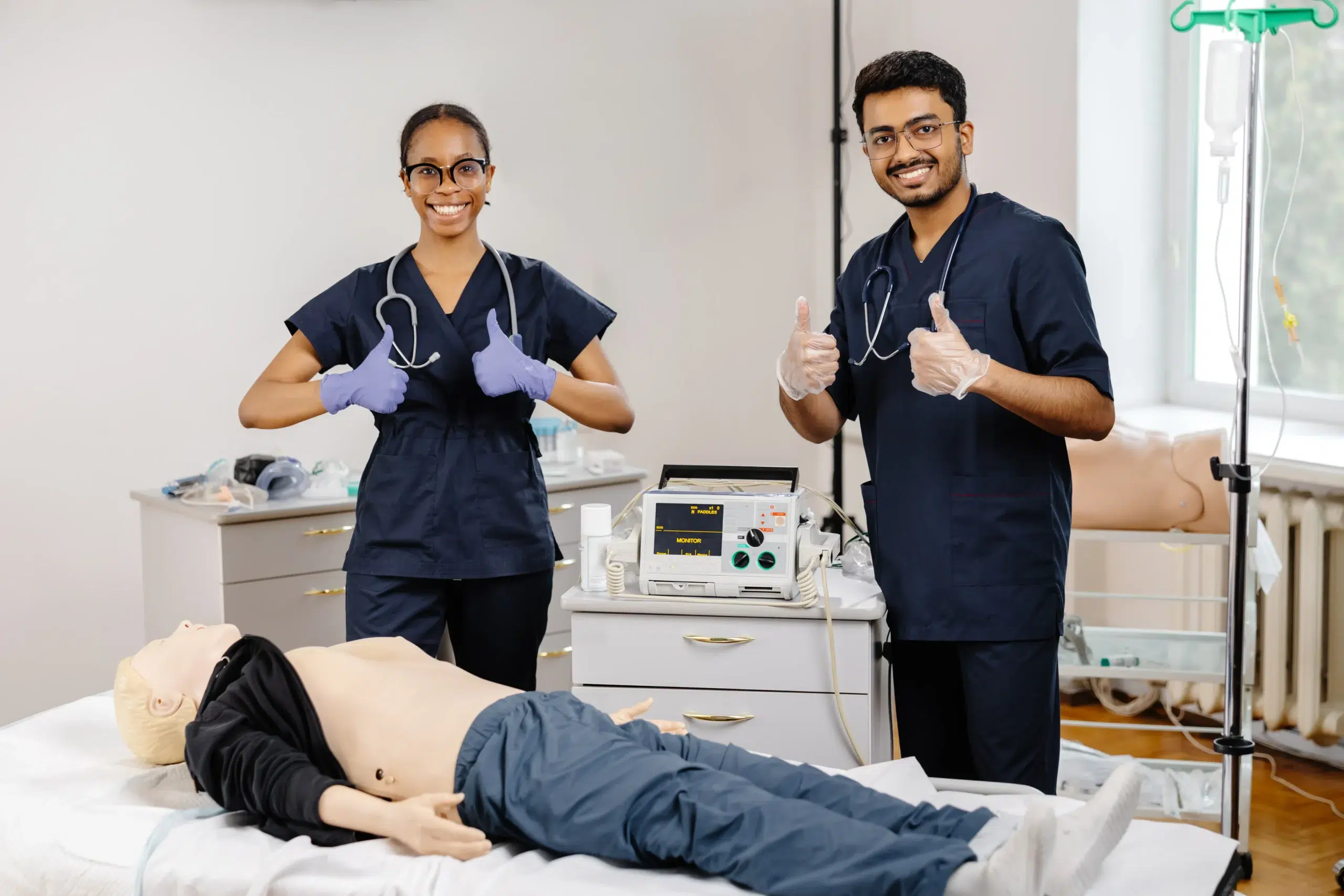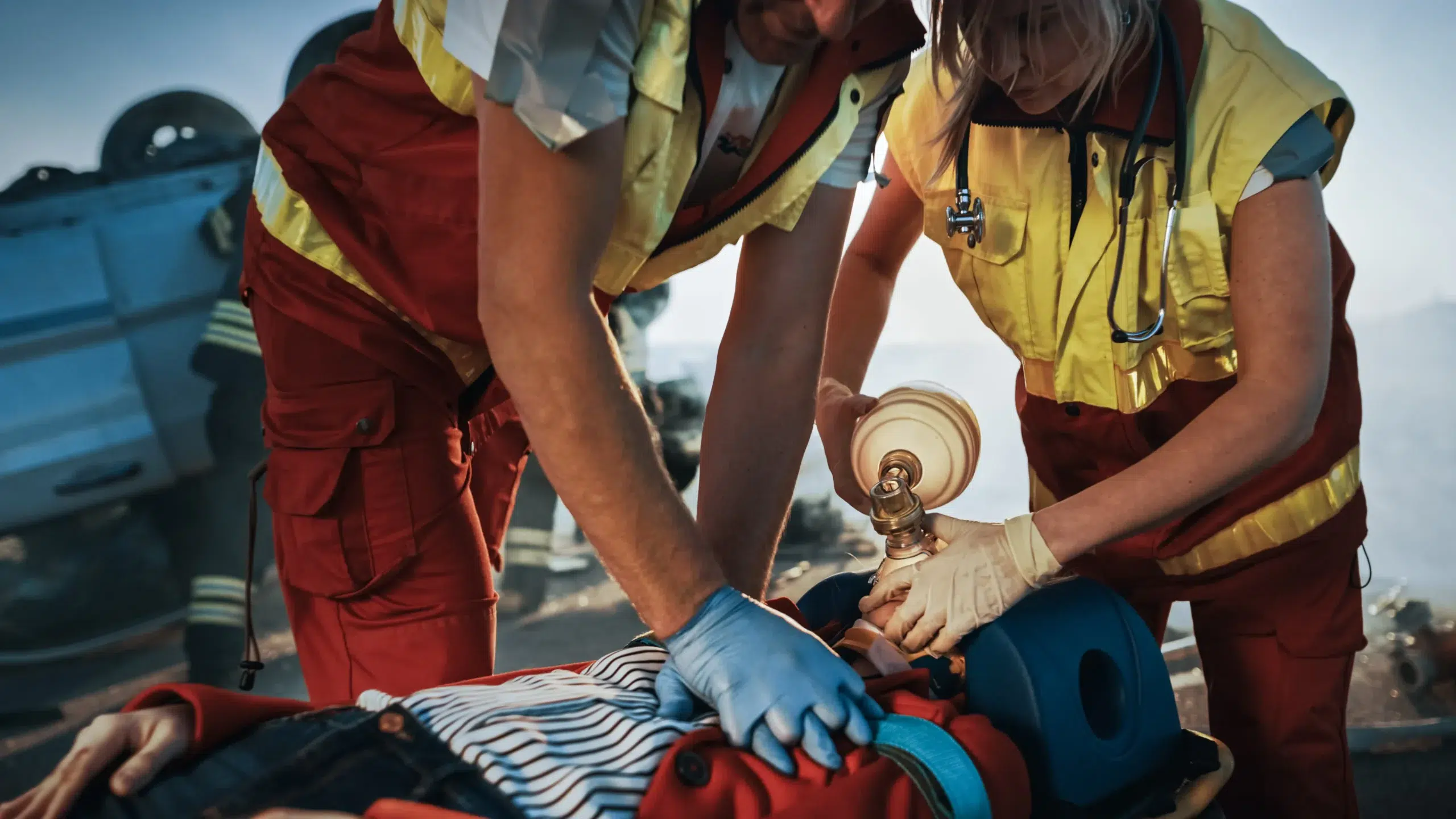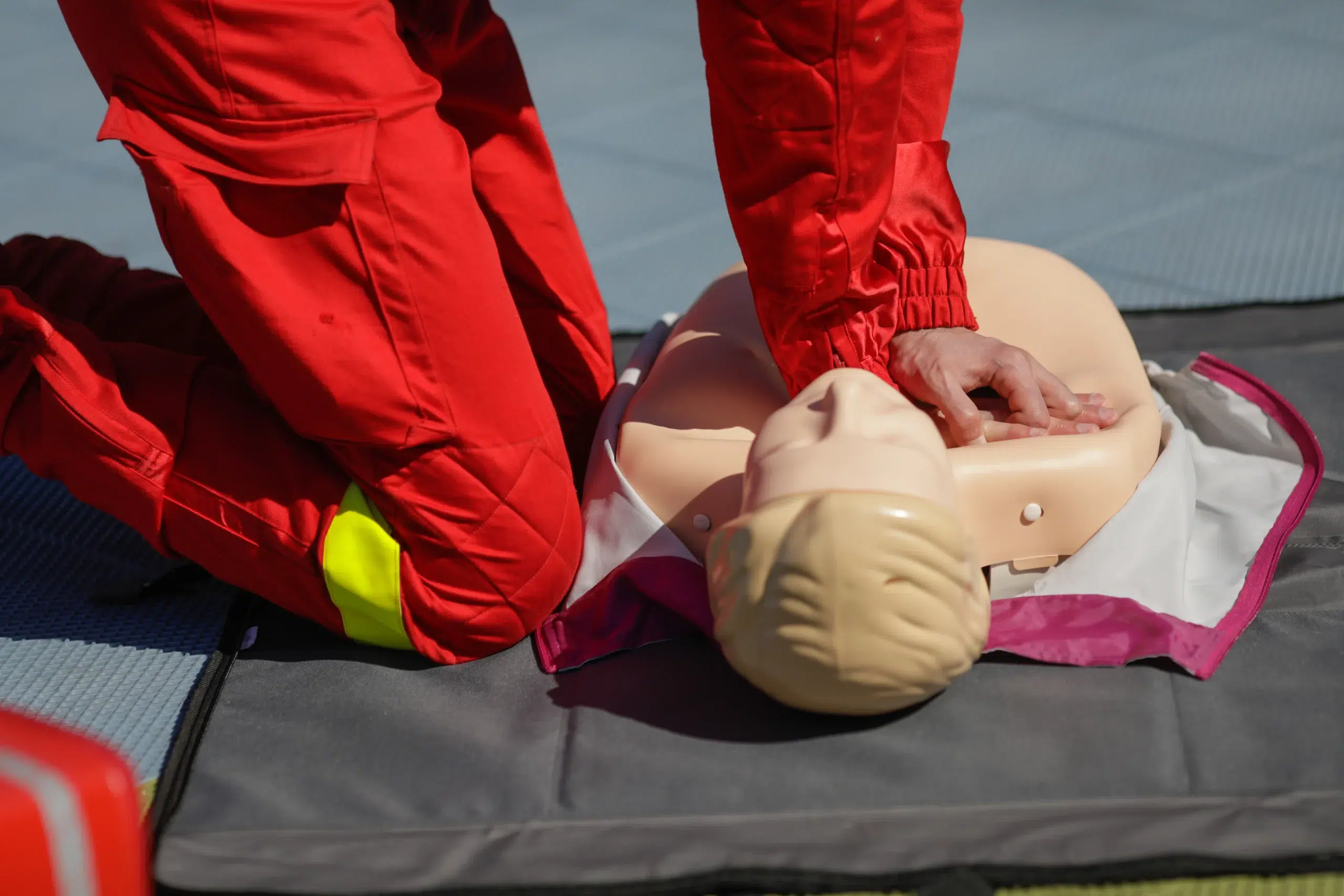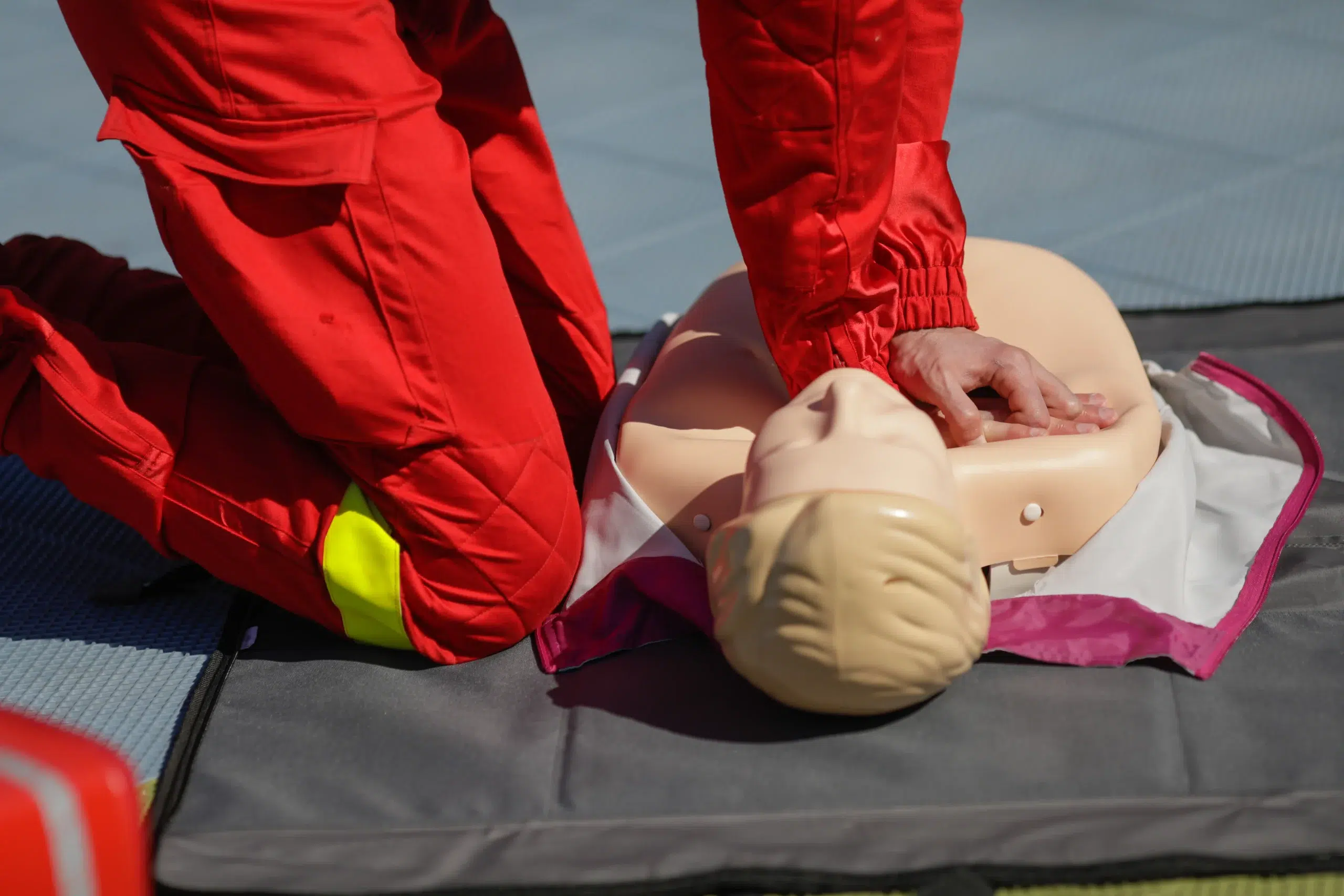Working in healthcare demands more than just theoretical knowledge; it requires practical skills, especially in emergencies. Basic Life Support (BLS) certification equips you with the skills to respond effectively to life-threatening situations. Whether you’re a seasoned healthcare professional or just starting your career, BLS certification is a valuable asset. It’s about more than just CPR; it’s about comprehensive training that covers a wider range of skills, including using an AED and managing airways. If you’re searching for “BLS classes near me,” this guide will help you understand the importance of BLS, what to expect in a class, how to find the right course for your needs, and how to maintain your certification. We’ll also discuss the different types of BLS classes available, including in-person and online options, and help you find the best fit for your learning style and schedule.
Key Takeaways
- BLS certification provides essential life-saving skills beyond basic CPR. Choose an AHA-certified course, like those offered by Safety Training Seminars, to learn CPR, AED use, and airway management techniques.
- Find a BLS class that fits your learning style and schedule. Consider in-person training for hands-on learning or online/blended options for flexibility. Compare factors like cost, location, and instructor qualifications to make the best choice.
- Maintain your BLS skills through regular renewal and continuing education. Stay up-to-date with the latest guidelines and best practices to provide effective care in emergencies. Explore resources and refresher courses to keep your skills sharp.
What is BLS?
Definition and Importance
Basic Life Support (BLS) certification equips healthcare providers with the skills to respond to life-threatening emergencies. It’s a critical certification, going beyond basic CPR to cover a broader range of skills and more in-depth training. This comprehensive approach ensures healthcare professionals can act swiftly and effectively in emergencies. BLS is crucial for anyone working in healthcare, providing a foundation for advanced life support and ensuring patient safety. It emphasizes early recognition and intervention, two factors that significantly impact survival rates. BLS-certified professionals are prepared to handle cardiac arrest, respiratory distress, and other critical situations, making them invaluable members of any healthcare team. For a comprehensive guide to OSHA-approved BLS certification, check out this helpful resource.
BLS Skills You’ll Learn
BLS training provides essential life-saving skills, including high-quality CPR, using an Automated External Defibrillator (AED), and airway management techniques. These skills are crucial for responding to cardiac arrest and other medical emergencies. You’ll learn how to quickly assess a situation, perform chest compressions, provide rescue breaths, and use an AED to restore a normal heart rhythm. Effective airway management is also a key component, ensuring adequate oxygen flow. AHA BLS courses prepare you for these situations, ensuring you can respond confidently and competently when every second counts. Find more information on finding BLS training in this practical guide.
Find BLS Classes Near You
Finding the right BLS class can feel overwhelming, but it doesn’t have to be. Here’s a breakdown of where to look:
American Heart Association (AHA)
The American Heart Association offers a standardized BLS certification recognized nationwide. You can find AHA-certified BLS courses through their website or by searching online for “AHA BLS classes near me.” Many training centers and hospitals offer these courses, ensuring high-quality instruction and adherence to AHA guidelines. AHA courses often include various learning formats, from traditional classroom settings to blended learning that combines online modules with in-person skills sessions.
Red Cross
The American Red Cross also provides widely accepted BLS certification courses. Similar to the AHA, the Red Cross offers various course formats, including in-person classes and online components. Check their website or search online for “Red Cross BLS classes near me” to find courses in your area. The Red Cross also offers instructor training for those interested in teaching BLS.
Safety Training Seminars
Safety Training Seminars specializes in providing AHA-certified courses, including BLS, right here in San Jose. We offer a range of schedules and formats to fit your needs, including daily classes and our unique RQI program for convenient online certification. Serving San Jose, Santa Clara, and Sunnyvale, we’re committed to providing high-quality, accessible training at competitive prices, backed by our low-price guarantee. Check out our BLS course schedule to find a class that works for you. We also offer CPR and First Aid training.
Local Healthcare Facilities
Many hospitals and healthcare facilities offer BLS training, often tailored to their staff but sometimes open to the public. Contact local hospitals or check their websites for information on BLS courses. These courses can be a great option for healthcare professionals seeking training specific to their workplace environment.
Community Colleges
Community colleges frequently offer a variety of healthcare certification courses, including BLS. Check the course catalogs of community colleges in your area. These courses are often more affordable than private training centers and can be a good option for students and community members.
What Happens in a BLS Class?
BLS certification goes beyond basic CPR. It covers a broader range of skills and provides more in-depth training, so you can respond to emergencies in healthcare and other settings. A BLS class typically covers adult, child, and infant CPR, use of an automated external defibrillator (AED), and relief of choking. You’ll also learn about team dynamics and high-quality CPR.
Course Duration and Curriculum
BLS classes usually take a few hours to complete, depending on the provider and format. The curriculum typically includes interactive lectures, demonstrations, and hands-on practice. You’ll receive a student handbook to review key concepts, covering topics like recognizing life-threatening emergencies, performing high-quality CPR, using an AED, and working effectively as a team. Safety Training Seminars offers resources to help you prepare.
Hands-on Practice and Scenarios
BLS training provides essential life-saving skills. From CPR and AED use to airway management, BLS equips you to respond confidently in medical emergencies, whether you’re a healthcare professional or not. A significant portion of the class involves hands-on practice. You’ll work with mannequins to practice CPR, AED use, and other skills. Many courses also incorporate realistic scenarios to simulate real-life emergencies. This helps build your confidence and improve your decision-making abilities under pressure. Safety Training Seminars uses real-time feedback from instructors to refine your technique and ensure you’re performing each skill correctly. This personalized approach is similar to the training programs evaluated by the National University of Singapore, where students received immediate feedback to improve their skills.
Getting Certified
BLS certification is a critical credential for healthcare providers, equipping them with the skills to respond to life-threatening emergencies. After completing the course and passing a skills test, you’ll receive your BLS certification card. This certification is typically valid for two years, after which you’ll need to take a renewal course. The American Heart Association provides resources and information on how to maintain your certification. With proper training and preparation, you can feel confident in your ability to provide effective care during emergencies.
In-Person vs. Online BLS: Which is Right for You?
Choosing between in-person and online BLS training depends on your learning style, schedule, and preferences. Let’s break down the pros and cons of each format to help you decide which one is best for you.
Pros and Cons of Each Format
In-Person BLS:
-
Pros: In-person training offers hands-on learning and immediate feedback from a certified instructor. You’ll practice skills like chest compressions and rescue breaths in a real-world setting, building confidence and proficiency. You can ask questions and interact with other students, creating a collaborative learning environment. This hands-on practice is essential for truly mastering BLS skills. The Red Cross also highlights the combination of classroom learning and hands-on components in their BLS courses.
-
Cons: In-person classes require you to stick to a fixed schedule and commute to a specific location. This can be challenging if you have a busy work life or other commitments.
Online BLS:
-
Pros: Online BLS courses offer flexibility and convenience. You can learn at your own pace, anytime, anywhere. This format often works well for those refreshing their certification or who prefer self-directed learning. Online courses often eliminate the need for a physical textbook, as noted in this BLS course description.
-
Cons: The American Heart Association (AHA) requires an in-person skills test for BLS certification. There’s no fully online option for AHA-certified BLS, as discussed on this forum. Online-only courses may offer some foundational knowledge, but they won’t fulfill the requirements for official certification.
Choose the Right Option
Consider these factors when making your decision:
- Your Learning Style: Do you thrive in a structured classroom or prefer the flexibility of online learning?
- Your Schedule: Can you commit to attending scheduled classes, or do you need the freedom to learn at your own pace?
- Your Budget: Compare the costs of in-person and blended learning options. Blended learning (online coursework plus an in-person skills session) can be a cost-effective solution.
- Your Location: If you’re looking for “BLS classes near me,” consider the proximity of training centers. This guide offers helpful tips for finding BLS training.
Also, consider whether you need initial certification, recertification, or a refresher course. This will influence the best option for your budget and learning objectives, as highlighted by ACLS123. Weighing these factors will help you choose the BLS training that best suits your needs and helps you achieve your certification goals.
BLS Class Costs & Discounts
Knowing the price range for BLS classes helps you budget and find the best value. Several factors influence the final cost, so understanding them will help you make an informed decision.
Average Price Range
BLS classes in San Francisco typically range from $50 to $150. Here in San Jose, at Safety Training Seminars, our prices are competitive, and we offer a low price guarantee. This means you can choose our courses knowing you’re getting a great deal. We’re committed to providing high-quality training at a fair price.
Factors Affecting Cost
Several things influence the cost of a BLS class. Course format is a major factor. In-person classes tend to be pricier than online or blended learning options because of classroom costs, equipment, and instructor time. The training provider also matters. Organizations like the American Heart Association often have set price ranges, while independent providers may have more flexibility. Finally, what’s included in the course fee can impact the overall cost. Some courses include study materials and certification fees, while others charge extra. At Safety Training Seminars, we believe in transparent pricing so you know what you’re paying for. See our website for details on our CPR and First Aid courses.
Discounts and Package Deals
Look for discounts and package deals to save on your BLS certification. Many providers offer discounts for groups, students, or returning customers. Bundling BLS certification with other courses like ACLS or PALS can also lower the total cost. For example, some providers offer renewal bundles that discount recertification for popular courses. You might also find promo codes online. Check with Safety Training Seminars for any current discounts or promotions. We frequently update our offers to make our training accessible.
How to Choose a BLS Class
Choosing the right BLS class is crucial for receiving high-quality training and obtaining a recognized certification. Here’s what to consider:
Accreditation and Recognition
Ensure the course you select is accredited by a reputable organization like the American Heart Association (AHA). AHA-accredited training centers, such as Safety Training Seminars, meet stringent standards and provide certifications widely accepted in healthcare settings. Look for providers who emphasize not just the certification, but also a commitment to excellent customer service and offer a low price guarantee, giving you confidence in your investment. AHA-accredited BLS courses ensure you receive training aligned with the latest industry standards.
Instructor Qualifications
The instructor’s expertise significantly impacts your learning experience. Seek out instructors with real-world experience in healthcare or emergency response. Their practical insights and ability to connect classroom learning to real-life scenarios can make a big difference in your understanding and ability to retain the material. Instructor experience and proper certification are vital for effective BLS training. Consider asking about the instructors’ backgrounds and qualifications before enrolling in a class.
Class Size and Equipment
Think about class size and the availability of equipment. Smaller classes often allow for more personalized attention from the instructor and more opportunities for hands-on practice. Adequate equipment, including manikins, AED trainers, and airway management tools, is essential for realistic simulation and skill development. BLS training equips you with essential life-saving skills, from CPR and AED use to airway management, preparing you to respond confidently in medical emergencies. Make sure the class you choose provides ample opportunity to practice these skills.
Reviews and Testimonials
Before enrolling, check reviews and testimonials from previous students. These firsthand accounts can offer valuable insights into the quality of instruction, the learning environment, and the overall course experience. Some providers, like Safety Training Seminars, offer additional resources and support after your class, such as refresher materials or access to instructors for ongoing questions. Look for courses that provide comprehensive support beyond the initial certification. You can find BLS classes with similar support resources. Reading reviews can help you find a course that fits your learning style and needs.
Prepare for Your BLS Class
Getting ready for your BLS class involves a little prep work. Knowing what to expect and having the right materials can make your learning experience smoother and more effective. Let’s break down how to prepare:
Required Materials and Pre-Course Study
Before class, you’ll need a few essential items. Most importantly, you’ll need the BLS Provider Manual. Your training center will let you know where to purchase this. Some training centers, like Safety Training Seminars, may include it in the course fee, so it’s always a good idea to double-check. Along with the manual, your training center might provide additional course materials. Many centers recommend completing a pre-course assessment. This helps you familiarize yourself with key concepts before class.
If you’re looking for extra preparation, consider using study guides covering CPR/AED, BLS, and ACLS. These can reinforce your understanding of important topics.
What to Wear and Bring
Comfort is key during your BLS class. You’ll be practicing hands-on skills, so wear comfortable clothing that allows you to move freely. Closed-toe shoes are a must for safety during the practical exercises. Bring a notepad and pen to jot down important notes throughout the course. And, of course, bring your BLS Provider Manual if it wasn’t included in your course materials. Most importantly, come prepared to learn and participate actively. A positive attitude and a willingness to engage will make a big difference in how much you learn and retain.
Maintain Your BLS Certification
Once you’ve earned your BLS certification, staying current is key. Knowing the renewal process and exploring continuing education will keep your skills sharp and your certification valid.
Renewal Requirements
BLS certifications are typically valid for two years. You’ll need to recertify to maintain your credentials and stay up-to-date on the latest guidelines. Check with your certifying organization, such as the American Heart Association or the Red Cross, for specific renewal requirements. Some organizations allow a grace period if your card has recently expired. Don’t let your skills lapse—stay proactive and plan for recertification.
Continuing Education Options
Even if your certification isn’t due for renewal yet, consider taking advantage of continuing education opportunities. Staying on top of changes in protocols and best practices is crucial for providing effective care. Many BLS providers offer refresher courses, online resources, and skills workshops. Safety Training Seminars, for example, provides various options to help you maintain your skills between renewals. These resources can also be a great way to connect with other healthcare professionals and share experiences. Look for options that fit your schedule and learning style, whether it’s a quick online module or an in-person refresher.
Find and Compare Local BLS Classes
Finding the right BLS class involves a little research, but it’s worth the effort to ensure you receive high-quality training. Here’s how to find and compare local BLS classes:
Online Search Tools
Start your search online. Use search engines like Google, DuckDuckGo, or Maps to find BLS providers near you. Many training centers have websites with course schedules, pricing, and registration information. Safety Training Seminars offers a range of American Heart Association (AHA) courses, including BLS certification, to prepare you for a variety of emergency situations.
Local Healthcare Facilities and Community Centers
Check with local hospitals, clinics, and community centers. Many hospitals in San Jose offer BLS training courses, often designed for healthcare professionals. Some facilities may also partner with organizations like the American Heart Association or the Red Cross to host classes. You might find that some providers offer hybrid BLS courses that combine online learning with in-person skills sessions. For a comprehensive guide to finding BLS classes near you, check out this helpful resource.
Factors to Consider When Comparing Options
Once you’ve identified a few potential BLS classes, consider these factors:
- Location and Schedule: Think about class location, scheduling flexibility (including weekend options), and accessibility (parking, public transport). If you’re balancing work or family commitments, finding a conveniently located class with a schedule that works for you is essential.
- Instructor Experience: Instructor experience and certification are vital. Look for instructors with real-world healthcare or emergency response experience. A knowledgeable and engaging instructor can make a significant difference in your learning experience.
- Course Format and Cost: Consider the course format—online, in-person, or blended—and the total cost. BLS training provides essential life-saving skills: From CPR and AED use to airway management, BLS equips you to respond confidently in medical emergencies, whether you’re a healthcare professional or not. BLS certification goes beyond basic CPR, covering a broader range of skills and providing more in-depth training. Think about which format best suits your learning style and budget. Safety Training Seminars offers a low price guarantee, ensuring you receive quality training at a competitive price.
- Class Size and Equipment: A smaller class size can allow for more personalized instruction and feedback. Also, check if the training center provides all the necessary equipment for practice. Hands-on experience is crucial for developing BLS skills.
Related Articles
- BLS Certification in San Jose: Your 2023 Guide – San Jose CPR Classes
- BLS Classes in Santa Clara: The Complete Guide – San Jose CPR Classes
- BLS Courses in San Jose: Your Complete Guide – San Jose CPR Classes
- BLS Certification in San Jose: A Guide for Healthcare Providers – San Jose CPR Classes
- BLS Renewal in San Jose: Your Guide – San Jose CPR Classes
Frequently Asked Questions
How often do I need to renew my BLS certification? BLS certification is typically valid for two years. Recertification is required to maintain your credentials and ensure you’re up-to-date with the latest guidelines.
What’s the difference between BLS and CPR certification? BLS (Basic Life Support) certification builds upon CPR (Cardiopulmonary Resuscitation) skills. BLS covers a broader range of skills, including using an AED, airway management techniques, and team dynamics during emergencies. It’s a more comprehensive approach to life support than basic CPR.
What if my BLS certification has recently expired? Some certifying organizations offer a grace period for recently expired certifications. It’s best to check with your certifying organization (like the AHA or Red Cross) for their specific policy on expired certifications and the steps required to reinstate your credentials.
Are online BLS courses accepted? While online BLS courses can offer valuable knowledge, the American Heart Association (AHA) requires an in-person skills test for official certification. A fully online BLS course won’t fulfill the requirements for AHA certification. Blended learning (online coursework combined with an in-person skills session) is a popular option.
What should I expect in a BLS class? Expect a combination of interactive lectures, demonstrations, and hands-on practice. You’ll learn essential skills like CPR, AED use, and airway management. Many courses also incorporate realistic scenarios to simulate real-life emergencies, helping you build confidence and improve your decision-making abilities under pressure.


